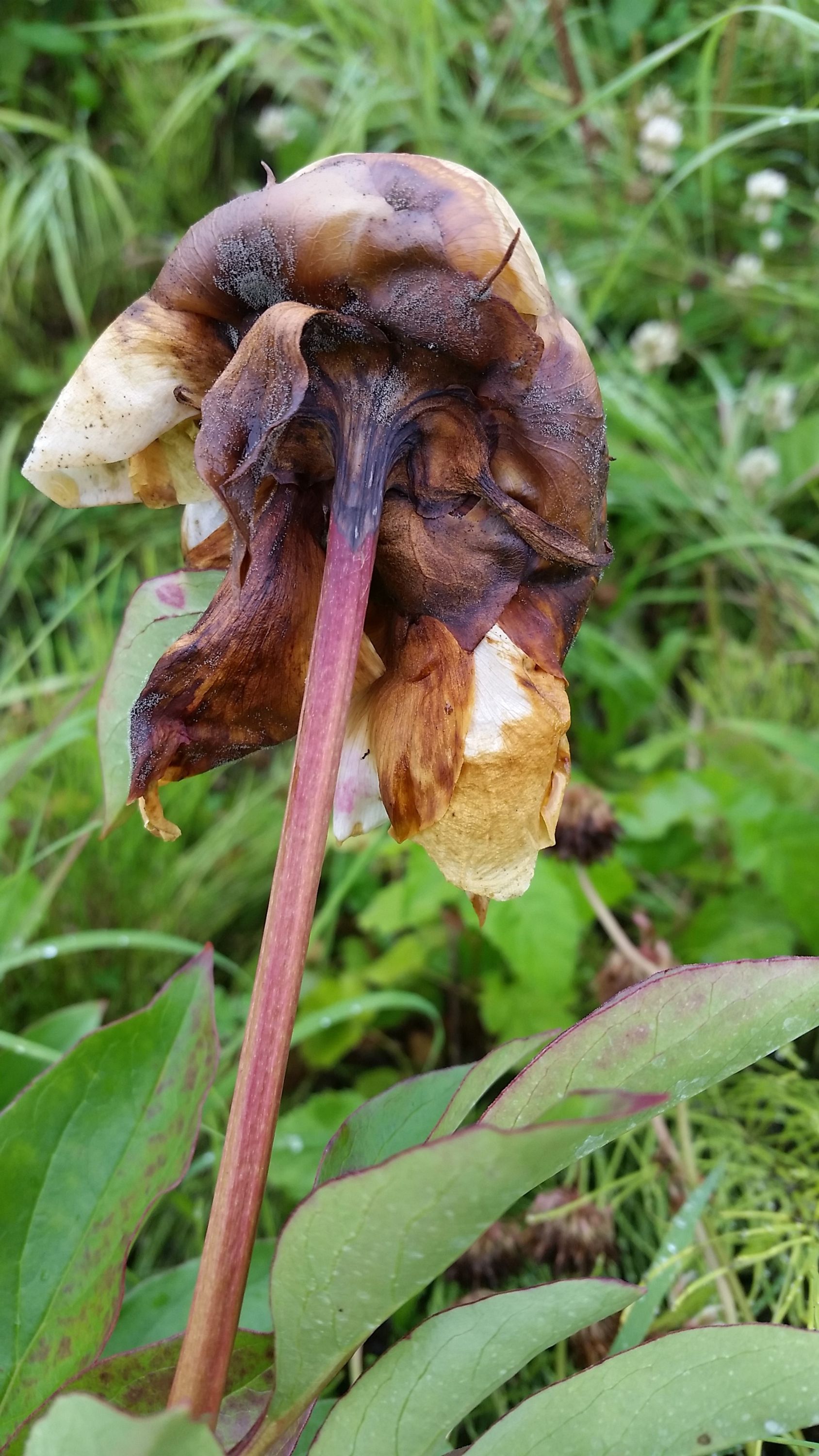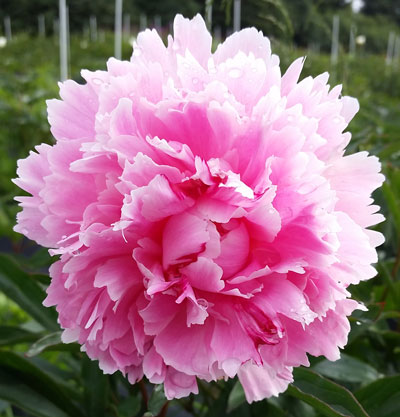What's Plaguing that Peony?
When you go the doctor, the first thing you need is an accurate diagnosis of your illness. If your disease is misdiagnosed, any treatment you’re prescribed could be ineffective or even harmful.
It’s the same with plants. Proper identification of a disease – if it even is a disease – is the critical first step for growers to prescribe the correct treatment. That’s why proper pest identification – including disease identification – is stressed so highly in integrated pest management programs.
 In peonies produced in the Pacific Northwest – and in new growing regions in Alaska – proper disease identification was a problem. If a plant was diseased, growers assumed that their plants had one of the most common diseases of peonies, Botrytis gray mold.
In peonies produced in the Pacific Northwest – and in new growing regions in Alaska – proper disease identification was a problem. If a plant was diseased, growers assumed that their plants had one of the most common diseases of peonies, Botrytis gray mold.
In fact, Washington State University doctoral student Andrea Garfinkel was studying that one disease in the popular cut flower when the penny dropped.
“We were working with a lot of growers, and receiving plant samples infected with a lot of other diseases,” she said. “Many were not all identified correctly, or at all. We were seeing disease that were not in the literature. There was a gap in our knowledge.”
So, more than halfway through her PhD studies, Garfinkel shifted gears. She no longer focused solely on Botrytis, but started working to identify every plant pathogen she found affecting peonies in the Pacific Northwest and Alaska.
She and colleagues visited farms in Washington, Oregon and Alaska, and collected samples from growers in six other states.
“For the farms we’d visit, we’d walk the fields, talk with farmers, ask them about their problems and look for anything different or unusual,” she explained. “We worked with a lot of really good growers who knew a lot more than me about peony production, but initially had the idea if there was disease on a plant it was Botrytis. Our research helped change that idea. There are other diseases. There are also other physiological or cultural reasons plants look unhealthy.”
Through a lot of sampling and tissue isolation, Garfinkel and her colleagues identified a wider breadth of pathogens affecting peonies.
“We identified a number of plant pathogens never reported in the state they were found in before,” she said. “And we found four plant pathogens that had never been reported on peonies at all in the United States.”
 The discoveries were important because some of the newly discovered diseases produced symptoms that looked a lot like those of other diseases.
The discoveries were important because some of the newly discovered diseases produced symptoms that looked a lot like those of other diseases.
“For instance, we found one pathogen that hadn’t been identified on peonies in the United States before,” she said. “And the symptoms look really similar to a disease known as measles, and a lot of growers were treating it as if it were measles.”
And those treatments were largely ineffective, because although the symptoms were similar, the diseases were totally different.
“One produces spore that are wind-blown and spread through the air, and the other produces spores that are spread through splashing water,” she said. “One is long lasting in the soil, and the other is found in plant litter. Management is completely different.”
Garfinkel’s recommendation to growers is to send unhealthy plants to a diagnostic lab until they are very familiar and confident in making their own disease identifications. She and her colleagues are also producing a grower’s guide to peony diseases that is scheduled for publication before the 2018 growing season reaches full bloom in the summer.
“Our hope is that the work helps growers so they don’t make hasty disease-management decisions,” said Garfinkel, who received her doctorate in December. “It’s good if they look for not just the best way, but develop best ways to manage disease, and those can include irrigation, sanitation and other practices. Disease-management is a process, not just a fungicide application.”